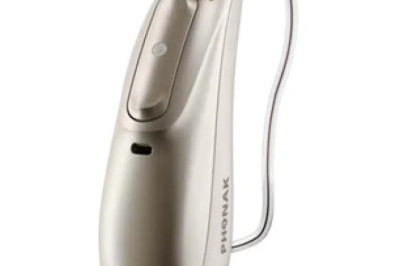views

Fractures sometimes make it necessary for an Orthopedic Surgeon to place a cast to put the broken bones back in place. The road to recovery after having a broken bone is long and painful. In addition to ensuring that the bones stay in place, casts also protect the area of injury from further damage till it completely recovers. Casts are either plaster or fiberglass. Coping with a cast can be difficult. Here are some tips to assist you.
Care tips for a cast
1. Keep it dry
Plaster casts are meant to be dry, as they can get displaced if they get wet and may not support the bone breakage properly. Don’t move your cast a lot for the first few days so that it becomes dry. You can also buy covers for the cast to keep it dry while taking a shower.
2. Keep it clean
Stay away from doing anything that may cause dirt or sand to enter your cast, especially in the case of plaster casts. Avoid any other small objects from getting into the cast because it can cause skin irritation. Clean waterproof casts with fresh water if they get dirty or wet.
3. Elevate the cast
Keep the cast risen above your heart to improve circulation and help in decreasing the swelling. For leg injuries, put pillows underneath to raise the cast.
4. Exercise the rest of the limb
Move your fingers or toes that are not injured regularly to reduce rigidity that may occur from keeping the injured arm or leg in one place.
5. Use an ice pack
Ice can aid in reducing swelling. Place ice in a zip lock bag, or buy an ice pack and put it over your cast. Ensure that the ice pack or bag is dry, and doesn’t leak from anywhere to keep the cast dry.
6. Don’t poke inside
Some people may attempt to soothe itching by sticking items, such as hangers and sticks inside the cast. It can further irritate your skin or cause soreness.
7. Blow-dry for itching
As the wound heals, itching can be severe inside the cast. Instead of trying to scratch your skin using sharp objects, use a blow-dryer with the cool air function in the area where there’s an itch.
8. Use crutches or a sling
In cases where the cast is on your foot, avoid putting too much weight on it by walking directly without any support. Crutches or a sling can help you keep the cast in place. Moreover, avoid any exhausting activities that may cause damage to your injury. Don’t drive or lift anything heavy as it can cause damage to your cast.
Signs that you need to consult your doctor
Living with a cast requires a lot of patience, but it’s essential to take good care of the cast till complete recovery. However, you should consult your doctor or the Best Orthopedic Surgeon in Multan if:
- You’re experiencing a high fever
- You feel numb, stingy, or burning around the injured area
- You’re unable to move your finger or toes
- You’re undergoing pain that’s getting worse
- The skin around the injury is pale, cold, or turns blue
- Your cast has a crack
- Your cast is wet
- The cast is too loose or too tight












